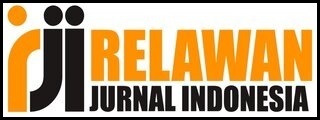“Polarization” of Consumer Behavior: S-O-R Theory Perspective
Keywords:
stimulus, organisme, respon, perilaku konsumenAbstract
Teori S-O-R memberikan informasi bahwa isyarat atmosfer (stimulus) mempengaruhi keadaan kognitif dan emosional pembeli (organisme), yang kemudian mempengaruhi hasil perilaku belanja mereka (respon). Nilai yang dirasakan (organisme) berdasarkan seberapa banyak pelanggan menginginkan atau membutuhkannya. Artikel ini merupakan hasil pemikiran yang dikonstruksi dari berbagai artikel kemudian disusun untuk menentukan “polarisasi” perilaku konsumen di Indonesia. Model tulisan ini menggunakan pendekatan teoritis S-O-R dalam mengurai “polarisasi”. Pendekatan penelitian dengan Teori S-O-R dimulai dengan pemberian stimulus kemudian diterima oleh organisme dan responnya. Hasil menunjukkan bahwa Stimulus merupakan faktor eksternal konsumen yang menjadi penggerak organisme. Organisme sebagai perantara stimulus dengan respon seperti sifat kognitif (memori, struktur pengetahuan, citra, keyakinan, dan pemikiran), emosi (satisfaction, rasa khawatir dan trust), sikap konsumen, motivasi hedonis, berisiko atau bermanfaat, harapan konsumen, kepribadian, pengalaman berbelanja.
References
Abdullah, M. F., Putit, L., & Teo, C. B. C. (2014). Impact of Relationship Marketing Tactics (RMT’s) & Relationship Quality on Customer Loyalty: A Study within the Malaysian Mobile Telecommunication Industry. Procedia - Social and Behavioral Sciences, 130(2011), 371–378. https://doi.org/10.1016/j.sbspro.2014.04.044
Arora, S., Parida, R. R., & Sahney, S. (2020). Understanding consumers’ showrooming behaviour: a stimulus–organism–response (S-O-R) perspective. International Journal of Retail and Distribution Management, 48(11), 1157–1176. https://doi.org/10.1108/IJRDM-01-2020-0033
Baker, J., Levy, M., & Grewal, D. (1992). An Experimental Approach to Making Retail Store Environment Decisions. Journal of Retailing, 68(Winter), 445–460.
Bansal, H. S., Taylor, S. F., & James, Y. S. (2005). “Migrating” to new service providers: Toward a unifying framework of consumers’ switching behaviors. Journal of the Academy of Marketing Science, 33(1), 96–115. https://doi.org/10.1177/0092070304267928
Bitner, M. J. (1992). Servicescapes: The Impact of Physical Surroundings on Customers and Employees. Journal of Marketing, 56(2), 57. https://doi.org/10.2307/1252042
Changa, H. J., Eckmanb, M., & Yanb, R. N. (2011). Application of the stimulus-organism-response model to the retail environment: The role of hedonic motivation in impulse buying behavior. International Review of Retail, Distribution and Consumer Research, 21(3), 233–249. https://doi.org/10.1080/09593969.2011.578798
Chebat, J. C., & Michon, R. (2003). Impact of ambient odors on mall shoppers’ emotions, cognition, and spending: A test of competitive causal theories. Journal of Business Research, 56(7), 529–539. https://doi.org/10.1016/S0148-2963(01)00247-8
Cox, D. F., & Rich, S. U. (1964). Perceived Risk and Consumer Decision-Making: The Case of Telephone Shopping. Journal of Marketing Research, 1(4), 32. https://doi.org/10.2307/3150375
Dania, & Yuliati, L. N. (2018). the Effect of Self-Controls, Information Exposure, and Consumer Rights Awareness Towards Consumerism and Consumer Independence in Y Generation. Journal of Consumer Sciences, 3(2), 43–55. https://doi.org/10.29244/jcs.3.2.43-55
Donovan, R. J., & Rossiter, J. R. (1982). Store Atmosphere: An Environmental Psychology Approach. Journal of Retailing, 58(1), 34–57.
Eroglu, S. A., Machleit, K. A., & Davis, L. M. (2001a). Atmospheric qualities of online retailing: A conceptual model and implications. Journal of Business Research, 54(2), 177–184. https://doi.org/10.1016/S0148-2963(99)00087-9
Eroglu, S. A., Machleit, K. A., & Davis, L. M. (2001b). Atmospheric qualities of online retailing. Journal of Business Research, 54(2), 177–184. https://doi.org/10.1016/s0148-2963(99)00087-9
Eroglu, S. A., Machleit, K. A., & Davis, L. M. (2003). Empirical Testing of a Model of Online Store Atmospherics and Shopper Responses. Psychology and Marketing, 20(2), 139–150. https://doi.org/10.1002/mar.10064
Forsythe, S. M., & Shi, B. (2003). Consumer patronage and risk perceptions in Internet shopping. Journal of Business Research, 56(11), 867–875. https://doi.org/10.1016/S0148-2963(01)00273-9
Hegner, S. M., Beldad, A. D., & Langenhorst, N. K. (2016). Here’s one for the next show: The influence of four marketing tactics on consumer relationships in the performing arts. The Eletronic Library, 6(1), 52–67.
Herrando, C., Jiménez-Martínez, J., José, M., & Hoyos, M.-D. (2019). Social Commerce Users’ Optimal Experience: Stimuli, Response and Culture. Journal of Electronic Commerce Research, 20(4), 199–218.
Holbrook, M. B., & Hirschman, E. C. (1982). The Experiential Aspects of Consumption: Consumer Fantasies, Feelings, and Fun. Journal of Consumer Research, 9(2), 132. https://doi.org/10.1086/208906
Hu, M., Zhang, M., & Luo, N. (2016). Understanding participation on video sharing communities: The role of self-construal and community interactivity. Computers in Human Behavior, 62, 105–115. https://doi.org/10.1016/j.chb.2016.03.077
Jacoby, J. (2002). Stimulus-organism-response reconsidered: An evolutionary step in modeling (consumer) behavior. Journal of Consumer Psychology, 12(1), 51–57. https://doi.org/10.1207/153276602753338081
Jang, S. C. (Shawn), & Namkung, Y. (2009). Perceived quality, emotions, and behavioral intentions: Application of an extended Mehrabian-Russell model to restaurants. Journal of Business Research, 62(4), 451–460. https://doi.org/10.1016/j.jbusres.2008.01.038
Jayanti, A. (2019). Kepuasan Konsumen ditinjau dari Harga dan Kualitas Produk pada Toko Online Lazada di Kota Makassar. Jurnal Manajemen Dan Organisasi Review, 1(2), 127–140.
Jayanti, A., Tasrim, & Arif, N. F. (2021). Determining Customer Satisfaction on Telkomsel Card User in Belopa City , Luwu Regency. Jurnal Mantik, 5(1), 223–229.
Jayanti, A., Tasrim, Nuradhitya, & Jumariati. (2021). Analisis Pengaruh Kepercayaan dan Komitmen terhadap Loyalitas Nasabah pada PT BRI Cabang Belopa. YUME : Journal of Management, 4(3), 542–552. https://doi.org/10.37531/yume.vxix.356
Jin, B., Park, J. Y., & Kim, J. (2008). Cross-cultural examination of the relationships among firm reputation, e-satisfaction, e-trust, and e-loyalty. International Marketing Review, 25(3), 324–337. https://doi.org/10.1108/02651330810877243
Kim, J., & Lennon, S. J. (2013). Effects of reputation and website quality on online consumers’ emotion, perceived risk and purchase intention: Based on the stimulus-organism-response model. Journal of Research in Interactive Marketing, 7(1), 33–56. https://doi.org/10.1108/17505931311316734
Kudla, N. L., & Klaas-Wissing, T. (2012). Sustainability in shipper-logistics service provider relationships: A tentative taxonomy based on agency theory and stimulus-response analysis. Journal of Purchasing and Supply Management, 18(4), 218–231. https://doi.org/10.1016/j.pursup.2012.04.001
Lee, K., & Shavitt, S. (2006). The use of cues depends on goals: Store reputation affects product judgments when social identity goals are salient. Journal of Consumer Psychology, 16(3), 260–271. https://doi.org/10.1207/s15327663jcp1603_8
Massara, F., & Pelloso, G. (2006). Investigating the consumer–environment interaction through image modelling technologies. International Review of Retail, Distribution and Consumer Research, 16(5), 519–531. https://doi.org/10.1080/09593960600980212
Murray, K. B. (1991). A Test of Services Marketing Theory : Consumer Information Acquisition Activities. 55(1), 10–25.
Naqvi, M. H. A., Jiang, Y., & Naqvi, M. (2020). Generating customer engagement in electronic-brand communities: a stimulus–organism–response perspective. Asia Pacific Journal of Marketing and Logistics, 33(7), 1535–1555. https://doi.org/10.1108/APJML-01-2020-0053
Navarro, A., Losada, F., Ruzo, E., & Díez, J. A. (2010). Implications of perceived competitive advantages, adaptation of marketing tactics and export commitment on export performance. Journal of World Business, 45(1), 49–58. https://doi.org/10.1016/j.jwb.2009.04.004
Ng, C. F. (2003). Satisfying shoppers’psychological needs: From public market to cyber-mall. Journal of Environmental Psychology, 23, 439–455. Retrieved from www.elsevier.com/locate/jep
Odekerken-Schröder, G., De Wulf, K., & Schumacher, P. (2003). Strengthening outcomes of retailer-consumer relationships. The dual impact of relationship marketing tactics and consumer personality. Journal of Business Research, 56(3), 177–190. https://doi.org/10.1016/S0148-2963(01)00219-3
Park, J., Lennon, S. J., & Stoel, L. (2005). On-line product presentation: Effects on mood, perceived risk, and purchase intention. Psychology and Marketing, 22(9), 695–719. https://doi.org/10.1002/mar.20080
Purohit, D., & Srivastava, J. (2001). Effect of Manufacturer Reputation, Retailer Reputation, and Product Warranty on Consumer Judgments of Product Quality: A Cue Diagnosticity Framework. Journal of Consumer Psychology, 10(3), 123–134. https://doi.org/10.1207/153276601750132696
Rao, P. S. (2016). Business Policy and Strategic Management (Text and Cases). In Himalayah Publishing House.
Raza, A., & Rehman, Z. (2012). Impact of relationship marketing tactics on relationship quality and customer loyalty: A case study of telecom sector of Pakistan. African Journal of Business Management, 6(14). https://doi.org/10.5897/ajbm11.3022
Richard, M. O., & Chandra, R. (2005). A model of consumer web navigational behavior: Conceptual development and application. Journal of Business Research, 58(8), 1019–1029. https://doi.org/10.1016/j.jbusres.2004.04.001
Roseman, I. J., Antoniou, A. A., & Jose, P. E. (1996). Appraisal determinants of emotions: Constructing a more accurate and comprehensive theory. Cognition and Emotion, 10(3), 241–278. https://doi.org/10.1080/026999396380240
Ruth, J. A., Brunel, F. E., & Otnes, C. C. (2002). Linking Thoughts to Feelings: and Consumption Emotions in Investigating Cognitive Appraisals a Mixed-Emotions Context. Genetic Epidemiology, 30(1), 44–58. https://doi.org/10.1002/gepi.1370070206
Scherer, K. R. (1993). Studying the Emotion-Antecedent Appraisal Process: An Expert System Approach. Cognition and Emotion, 7(3–4), 325–355. https://doi.org/10.1080/02699939308409192
Sherman, E., Mathur, A., & Smith, R. B. (1997). Store environment and consumer purchase behavior: Mediating role of consumer emotions. Psychology and Marketing, 14(4), 361–378. https://doi.org/10.1002/(SICI)1520-6793(199707)14:4<361::AID-MAR4>3.0.CO;2-7
Simanjuntak, M., & Harbani, R. I. (2022). Consumerism Behaviour of Indonesian Consumer: The Role of Self-Sufficiency and Information-Seeking. Jurnal Manajemen Dan Organisasi, 13(1), 1–11. https://doi.org/10.29244/jmo.v13i1.40434
Song, S., Yao, X., & Wen, N. (2021). What motivates Chinese consumers to avoid information about the COVID-19 pandemic?: The perspective of the stimulus-organism-response model. Information Processing and Management, 58(1), 102407. https://doi.org/10.1016/j.ipm.2020.102407
Tasrim. (2021). STRATEGI LEVEL KORPORAT, BISNIS DAN FUNGSIONAL. In Manajemen Strategik (pp. 85–98).
Turley, L. W., & Milliman, R. E. (2000). Atmospheric effects on shopping behavior: A review of the experimental evidence. Journal of Business Research, 49(2), 193–211. https://doi.org/10.1016/S0148-2963(99)00010-7
Vos, M. C., Galetzka, M., Mobach, M. P., van Hagen, M., & Pruyn, A. T. H. (2018). Cleanliness unravelled: a review and integration of literature. Journal of Facilities Management, 16(4), 429–451. https://doi.org/10.1108/JFM-06-2017-0025
Wang, Y. J., Hernandez, M. D., & Minor, M. S. (2010). Web aesthetics effects on perceived online service quality and satisfaction in an e-tail environment: The moderating role of purchase task. Journal of Business Research, 63(9–10), 935–942. https://doi.org/10.1016/j.jbusres.2009.01.016
Wu, Y.-L., & Li, E. Y. (2017). Marketing Mix, Customer Value, and Customer Loyalty in Social Commerce: A Stimulus-Organism- Response Perspective. The Eletronic Library. https://doi.org/https://doi.org/10.1108/IntR-08-2016-0250
Wu, Y. L., & Li, E. Y. (2018). Marketing mix, customer value, and customer loyalty in social commerce: A stimulus-organism-response perspective. Internet Research, 28(1), 74–104. https://doi.org/10.1108/IntR-08-2016-0250
Zhu, L., Li, H., Wang, F. K., He, W., & Tian, Z. (2020). How online reviews affect purchase intention: a new model based on the stimulus-organism-response (S-O-R) framework. Aslib Journal of Information Management, 72(4), 463–488. https://doi.org/10.1108/AJIM-11-2019-0308
Downloads
Published
How to Cite
Issue
Section
License
Copyright (c) 2023 Jurnal Orientasi Bisnis dan Entrepreneurship (JOBS)

This work is licensed under a Creative Commons Attribution-ShareAlike 4.0 International License.

This work is licensed under a CC Attribution-ShareAlike 4.0

 Ansri Jayanti
Ansri Jayanti
 STIE Makassar Maju
STIE Makassar Maju











